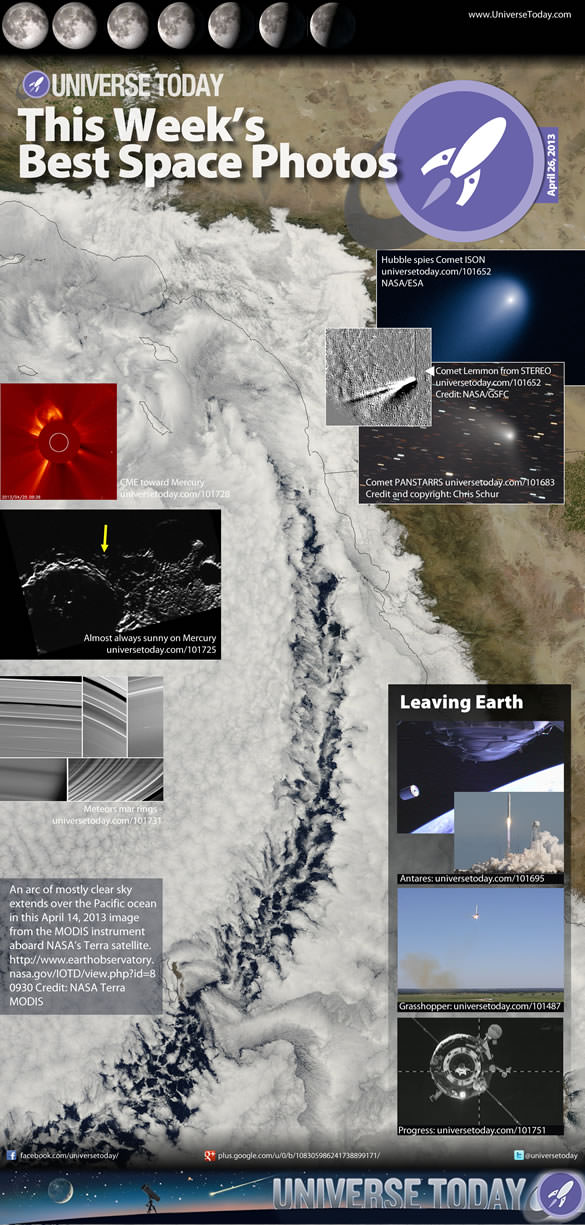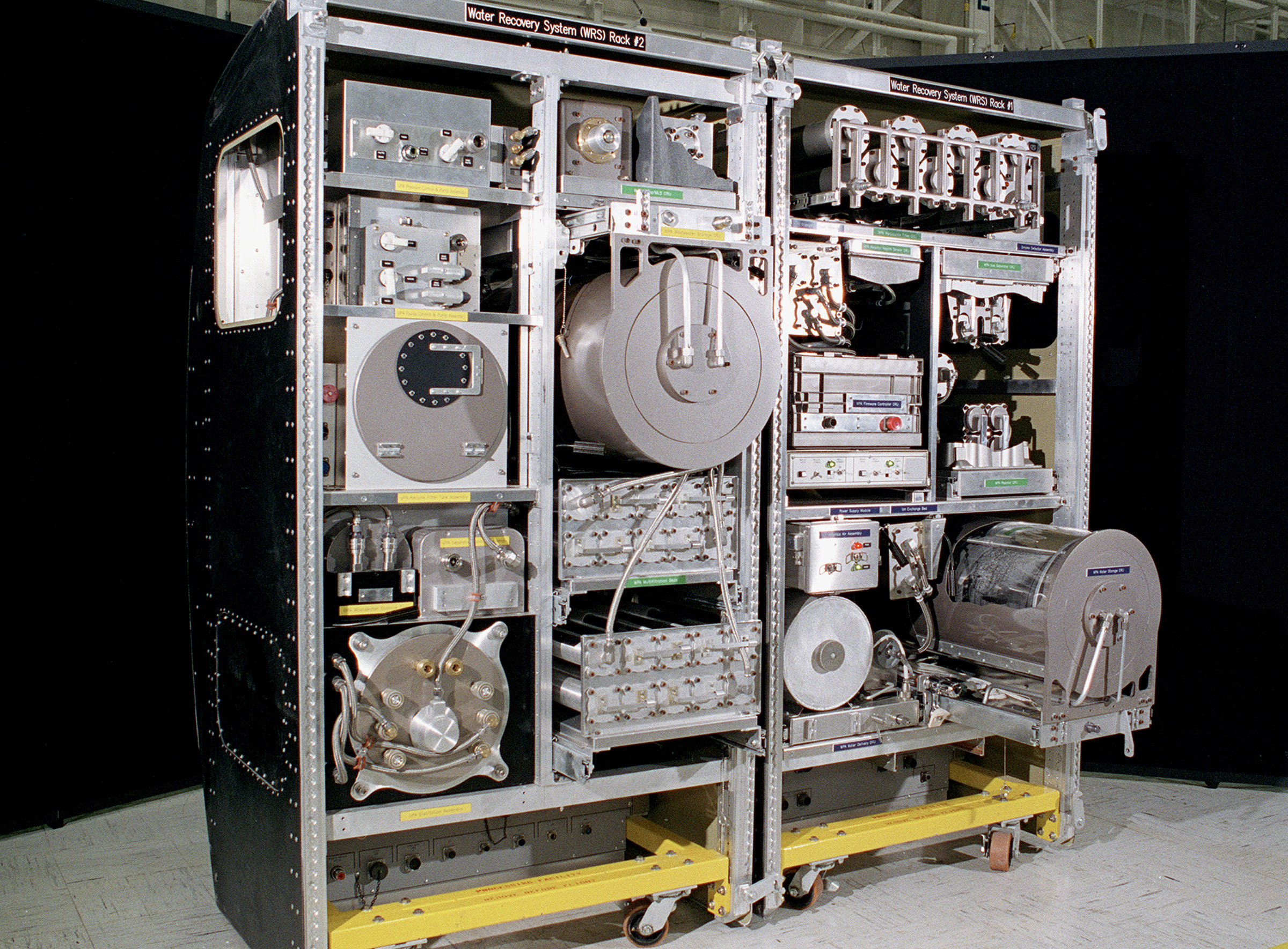Saturn is one of the most striking objects to see through a telescope, and it is now at its brightest in the night sky as it reaches opposition from the Sun. This is when Earth stands mostly perfectly in line between Saturn and the Sun. It is when Saturn is brightest (at magnitude +0.3), closely approximating famous “first magnitude” stars like Betelgeuse. Also, it is when Saturn is out all night long. Continue reading “Saturn Reaches Opposition on April 28”
Experts Urge Removal of Space Debris From Orbit
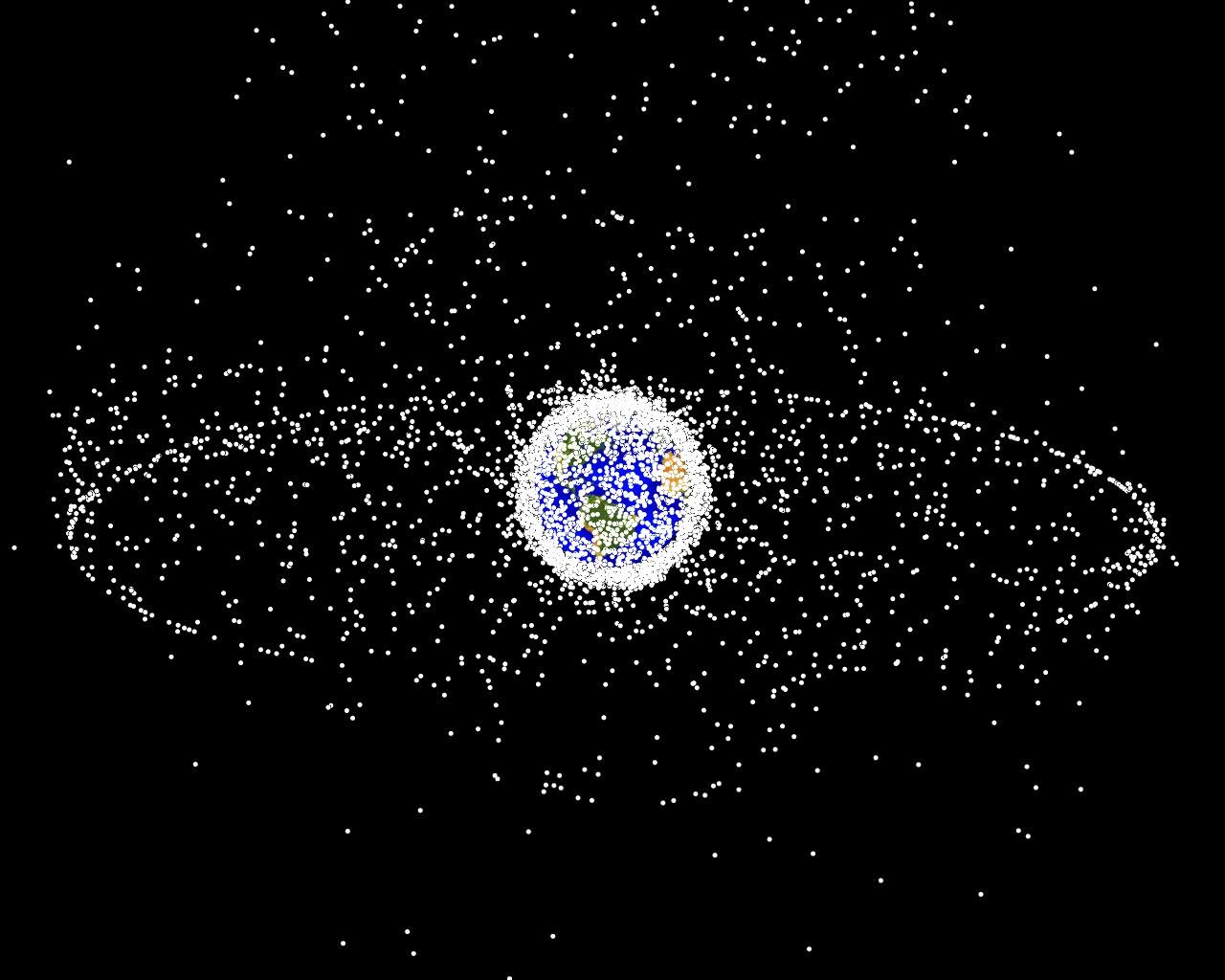
Action is needed soon to remove the largest pieces of space debris from orbit before the amount of junk destroys massive amounts of critical space infrastructure, according to a panel at the Sixth European Conference on Space Debris.
“Whatever we are going to do, whatever we have to do, is an expensive solution,” said Heiner Klinkrad, head of the European Space Agency space debris office, in a panel this week that was broadcast on ESA’s website.
“We have to compare the costs to solving the problem in an early stage as opposed to losing the infrastructure in orbit in the not-too-distant future.”
The panel estimated that there is $1.3 billion (1 billion Euros) worth of space satellite infrastructure that must be protected. The 200 most crucial satellites identified by the space community have an insured value of $169.5 million (130 million Euros), Klinkrad added.
Critical infrastructure, though not specified exactly by the panel, can include communication satellites and military eyes in the sky. Also at risk is that largest of human outposts in space — the International Space Station.
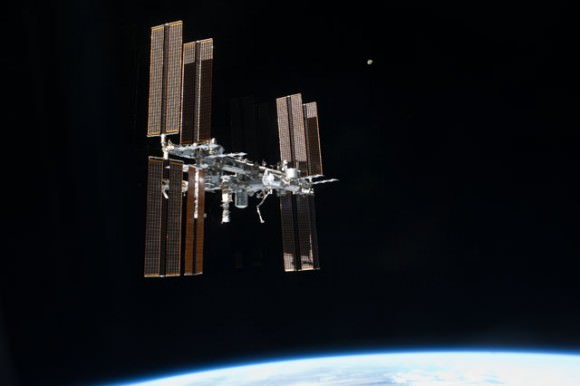
The conference concluded that without further action — even without launching any new rockets — it’s quite possible there could be a runaway effect of collisions producing debris within a few decades. Even a tiny object could act like a hand grenade in orbit if it smashes into a satellite, Klinkrad said.
A recent example of the problem: a piece of Chinese space debris smashed into a Russian satellite in March. It didn’t destroy the satellite, but altered its orbit.
To mitigate the situation, representatives suggested removing 5 to 10 large pieces of debris every year. They added they are uncertain about how soon a large problem would occur, but noted that the number of small objects is definitively increasing annually according to measurements done by the Walter Baade 6.5-meter Magellan Telescope.
“[It’s] something we haven’t know until now. We have been suspecting it is the case … this is a new result which is very important.”
While highlighting the risk, the European representatives of the panel added they are not standing idly by. Already, there are regulatory changes that could slow the problem for future launches — although there still will be cleanup to do from five past decades of space exploration.
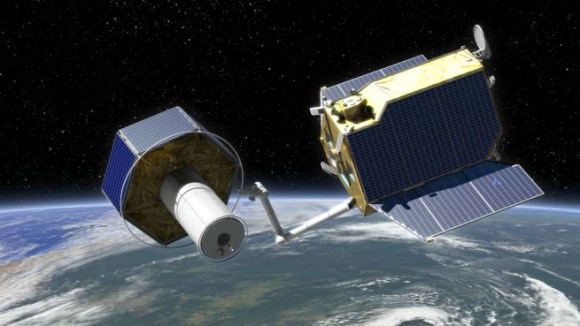
A few of the points brought up:
– German officials are working on an in-orbit satellite servicing solution called DEOS. “The DEOS project will for the first time demonstrate technologies for the controlled in-orbit disposal of a defective satellite,” Astrium, the prime contractor for the definition phase, wrote in a press release in 2012. “In addition, DEOS will practice how to complete maintenance tasks – refuelling in particular – that extend the service life of satellites.”
– France’s Parliament passed the Space Operations Act in December 2010. “Its chief objective is to ensure that the technical risks associated with space activities are properly mitigated, without compromising private contractors’ competitiveness,” French space agency CNES wrote on its website. “The government provides a financial guarantee to compensate damages to people, property or the environment.”
– A United Nations subcommittee of the Committee on the Peaceful Uses of Outer Space is working on space sustainability guidelines that will include space debris and space operations practices. More details should be released in June, although Claudio Portelli (a representative from Italy’s space agency) warned he did not expect any debris removal proposals to emerge from this work.
For more technical details on the space debris problem, check out the webcast of the ESA space debris conference.
Stonehenge Was An Ancient Burial Ground For the Rich: Study
The site of Stonehenge — that mysterious collection of British rocks that could have served as a calendar using the stars — was also a graveyard for the elite, according to new research.
A British group led by the University College London looked at 63 bodies surrounding the historical site. They determined these people were part of a group of elite families that brought their relatives to Stonehenge for burial over more than 200 years, starting from 2,900 BC.
The bodies were buried long before the rocks visible today were erected, though.
“The first Stonehenge began its life as a huge graveyard,” stated UCL’s Parker Pearson, who led the study. “The original monument was a large circular enclosure built 500 years before the Stonehenge we know today, with the remains of many of the cremated bodies originally marked by the bluestones of Stonehenge. We have also discovered that the second Stonehenge was built 200 years earlier than thought, around 2500 BC.”
The findings were broadcast on Britain’s Channel 4 in March.
A separate study, that will be broadcast on BBC 4 Monday (April 29), shows that humans were in the area of Stonehenge about 3,000 years before it was constructed — making human occupancy about 5,000 years than previously thought.
According to media reports, a team from the United Kingdom’s Open University spotted evidence of human activity about a mile from Stonehenge, in nearby Amesbury.
Archaeologists found an extinct species of cow, called a wild auroch, on the site as well, supposing that it was some sort of migration route that attracted human hunters.
Source: University College London
Weekly Space Hangout – April 26, 2013
We had an action packed Weekly Space Hangout on Friday, with a vast collection of different stories in astronomy and spaceflight. This week’s panel included Alan Boyle, Dr. Nicole Gugliucci, Scott Lewis, Jason Major, and Dr. Matthew Francis. Hosted by Fraser Cain.
Some of the stories we covered included: Pulsar Provides Confirmation of General Relativity, Meteorites Crashing into Saturn’s Rings, Radio Observations of Betelgeuse, Progress Docks with the ISS, Hubble Observes Comet ISON, Grasshopper Jumps 250 Meters, April 25th Lunar Eclipse, and the Mars One Reality Show.
We record the Weekly Space Hangout every Friday at 12 pm Pacific / 3 pm Eastern. You can watch us live on Google+, Cosmoquest or listen after as part of the Astronomy Cast podcast feed (audio only).
The Virtual Star Party in 60 Seconds
Every Sunday night we connect up a bunch of telescopes into a live Google+ Hangout and showcase the night sky. In addition to a team of astronomers and their scopes, we usually have a few PhD astronomers on hand to explain the objects that we’re looking at. Each episode typically lasts about an hour and we’re able to see a few dozen objects. If you want to get the gist of what a Virtual Star Party looks like, check out this 60-second version put together by my co-host, Scott Lewis.
I’m not sure if Scott will have the energy to do these every week, but I love how this worked out.
We run the Virtual Star Party every Sunday night as a live Google+ Hangout. Want to find when it’s happening next? Just circle the Virtual Star Party page on Google+. Visit the Universe Today YouTube channel to see an archive of all our past events.
The White House Releases a Report on Space Weather
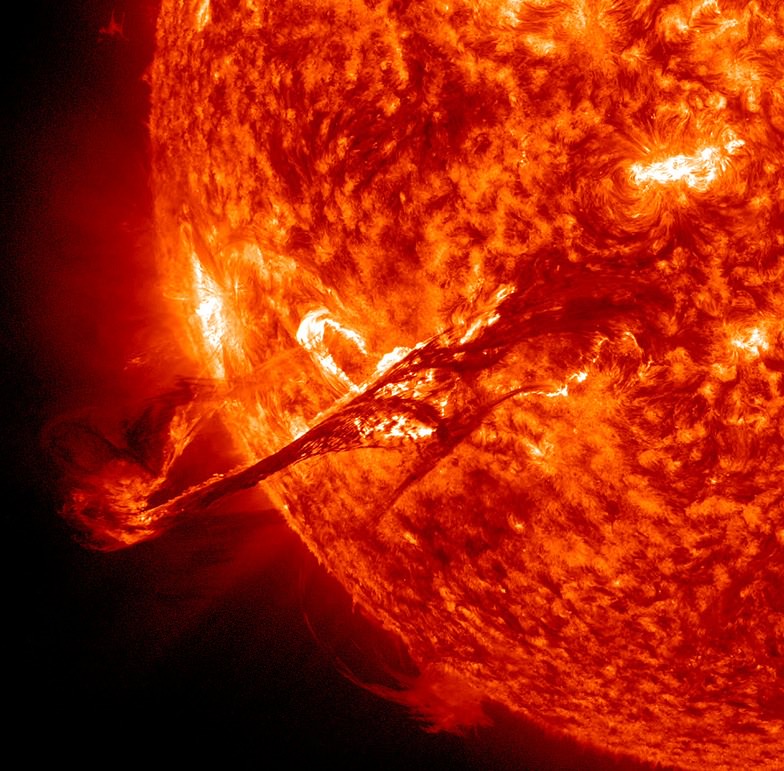
We live on a planet dominated by weather. But not just the kind that comes in the form of wind, rain, and snow — we are also under the influence of space weather, generated by the incredible power of our home star a “mere” 93 million miles away. As we orbit the Sun our planet is, in effect, inside its outer atmosphere, and as such is subject to the constantly-flowing wind of charged particles and occasional outbursts of radiation and material that it releases. Although it may sound like something from science fiction, space weather is very real… and the more we rely on sensitive electronics and satellites in orbit, the more we’ll need to have accurate weather reports.
Fortunately, the reality of space weather has not gone unnoticed by the U.S. Federal Government.
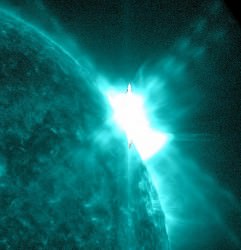
Today the White House Office of Science and Technology Policy released a new report, Space Weather Observing Systems: Current Capabilities and Requirements for the Next Decade, which is an assessment of the United States government’s capacity to monitor and forecast potentially harmful space weather and how to possibly mitigate the damage from any exceptionally powerful solar storms in the future.
The report was made by a Joint Action Group (JAG) formed by the National Space Weather Program Council (NSWPC).
The impacts of space weather can have serious economic consequences. For example, geomagnetic storms during the 1990’s knocked out several telecommunications satellites, which had to be replaced at a cost of about $200 million each. If another “once in a century” severe geomagnetic storm occurs (such as the 1859 “super storm”), the cost on the satellite industry alone could be approximately $50 – $100 billion. The potential consequences on the Nation’s power grid are even higher, with potential costs of $1 – 2 trillion that could take up to a decade to completely repair.
– Report on Space Weather Observing Systems: Current Capabilities and Requirements for the Next Decade (April 2013)
“In other words,” according to the report, “the Nation is at risk of losing critical capabilities that have significant economic and security impacts should these key space weather observing systems fail to be maintained and replaced.”
Obviously, not good.
Read the full report here, and follow current and ongoing space weather events on the NOAA’s Space Weather Prediction Center website.
Source: White House Office of Science and Technology Policy
The National Space Weather Program is a Federal interagency initiative with the mission of advancing the improvement of space weather services and supporting research in order to prepare the country for the technological, economic, security, and health impacts that may arise from extreme space weather events.
This Week’s Best Space Photos – April 26, 2013
This Week’s Best Space Photos – April 26, 2013.
An Inside Look at the Water/Urine Recycling System on the Space Station
International Space Station Commander Chris Hadfield “lifts the lid” on the Water Recovery System, the first liquid recycling system to be flown in space that cleans almost all the “water” (greywater, urine, sweat) produced by crew members so that it can be used again. As previous space station resident Don Pettit has said, “Yesterday’s coffee becomes today’s coffee.”
Previously, Russia’s space station Mir recycled cosmonaut’s sweat, but this system on the ISS can recycle about 93 percent of the liquids it receives. The ISS’s water recycler uses a distiller that looks like a keg. On Earth, distilling is a simple process of boiling water and cooling the steam back into pure water. But without gravity, the contaminants in water never separate from the steam no matter how much heat is used. So, the keg-sized distiller spins to produce an artificial gravity field while boiling the water. The contaminants in the urine or greywater press against the sides of the drum while the steam gathers in the middle and is pumped to a filter.
Radio Observatory Moves to a Shopping Mall
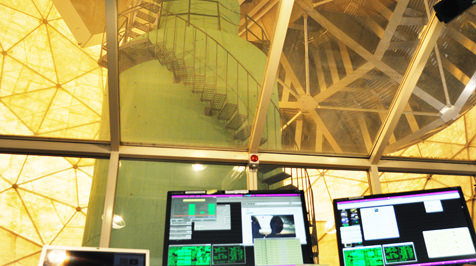
How’s this for bringing science to the public? This weekend, the Onsala Space Observatory in Sweden will be moving their telescope’s control room to Scandinavia’s biggest shopping mall, Nordstan (North Town) in Gothenburg.
“The idea is to remotely observe with our 20-meter telescope — as well as a couple of smaller ones — and let the general public take part and see how it’s done and how exciting it is,” the observatory’s public relations director Robert Cumming told Universe Today.”
The great thing about radio astronomy is that is can be done during the day – during business hours at the mall.
And they’ve got some interesting targets on the list, including Comet Lemmon. “It’s too close to the sun for ordinary telescopes, but for a radio telescope like ours that’s no problem,” said Cumming.
Of course, the radio telescope itself still has to be out at its normal location, away from radio interference, but the control room will move to allow public interaction. But there will be bus tours available out to the big telescope.
But beyond public outreach, looking at Comet Lemmon gives the astronomers at Onsala practice for the (hopefully) big one this fall, Comet ISON. “Onsala will have one of very few telescopes that can study ISON from the Earth,” Cumming said.
So, for any of our readers in Sweden, head out the North Town Mall in Gothenburg between the hours of 11:00 and 16:00 local time on Sunday, April 28. This is part of the Gothenburg Science Festival.
“It is the first time we are trying to make a telescope control room outside Onsala,” said Mitra Hajigholi, graduate student in astronomy at Chalmers University of Technology, who will be one of several researchers on location at the mall. “With the help of our large 20-meter telescope, we want to look at a comet and display measurements in real time. It will be exciting!”
You Can Remove All Ads from Universe Today
I just wanted to remind everyone, if you don’t want advertising mixed in with your space news, you can remove them permanently with a 1-time donation to Universe Today. I’ll switch you over to a Member Account, and all the ads will be automatically removed for your viewing pleasure.
One donation.
Any amount, no matter how small.
All ads removed from Universe Today forever.
P.S. To the 270 Universe Today members, your support means so much to us. Thank you!


